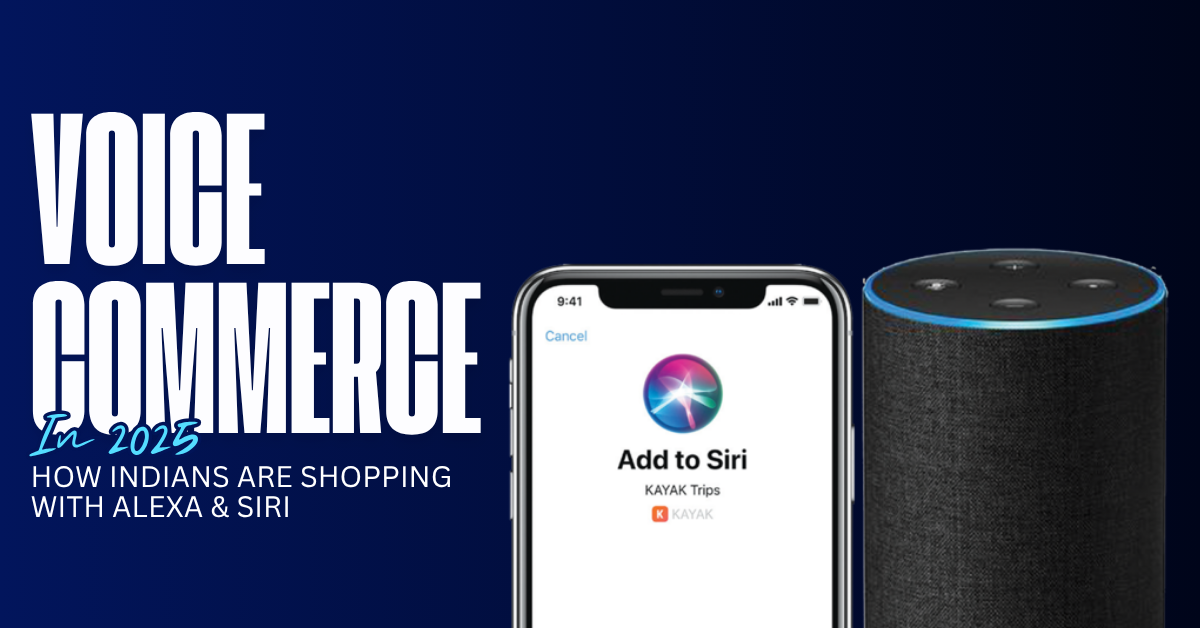Voice is no longer just a tool for setting alarms or playing music. In 2025, voice commerce is becoming a major force in India’s digital shopping revolution. With the rise of voice assistants like Alexa, Siri, and Google Assistant, Indians are increasingly using spoken commands to explore, compare, and buy products — all without touching a screen.
This shift is not just about convenience — it’s about accessibility, language inclusion, and trust. Let’s explore how Indians are embracing voice commerce, what they’re buying, and what it means for the future of retail.
1. Voice Commerce: A Growing Trend
According to industry reports, over 35% of online Indian shoppers in urban areas have used a voice assistant to search or buy a product. The rise of affordable smartphones, smart speakers, and regional language support has fueled this trend.
What makes voice commerce attractive?
Hands-free convenience
Faster search and ordering
Natural language interaction
Multi-language capabilities (Hindi, Tamil, Bengali, etc.)
2. What Are Indians Buying via Voice?
While the usage is still growing, certain categories are already dominating:
| Product Category | Popular Voice Commands | Reason for Use |
|---|---|---|
| Groceries & Essentials | “Alexa, order atta and dal” | Frequent purchases, easy to repeat |
| Electronics & Gadgets | “Hey Siri, find latest iPhone deals” | Quick search for specs and prices |
| Fashion & Apparel | “Show me kurtas under ₹1000” | Browsing deals and filtering options |
| Food Delivery | “Order veg thali from Swiggy” | Instant meal ordering, no typing needed |
| Home Appliances | “Best washing machines under ₹20,000” | Research-heavy queries with quick results |
| Reordering Favorites | “Buy my usual shampoo” | Saved preferences streamline process |
3. Regional Language Support is Driving Adoption
India’s diversity in language is finally being embraced by tech. Voice assistants now understand and respond in Hindi, Tamil, Telugu, Marathi, Bengali, and more. This has opened doors to:
First-time digital buyers in Tier 2/3 cities
Older users unfamiliar with typing or apps
People who prefer speaking in their native language
Brands that optimize for multilingual voice search are seeing higher engagement and conversion rates.
4. Shopping as a Conversational Experience
Unlike traditional e-commerce, voice commerce feels like a two-way dialogue. Shoppers can:
Ask follow-up questions
Compare products through conversation
Get personalized recommendations
Even track orders or get delivery updates
This natural flow builds trust and comfort, making users feel supported — especially those new to online shopping.
5. Voice + AI = Personalized Shopping
Voice assistants powered by AI are learning user preferences to make shopping more personalized. For example:
“Your favorite detergent is on sale — want to reorder?”
“Last time you bought basmati rice from Brand X. Should I add it again?”
“You usually order at 7 PM — ready for your dinner order?”
This contextual personalization turns passive suggestions into active conversions.
6. Challenges to Overcome
While voice commerce is promising, a few hurdles remain:
Accent and dialect variations can affect recognition accuracy
Lack of visual display limits product comparison
Privacy concerns about voice data storage
Many apps still lack full voice integration
Tech companies and retailers are actively working on solving these, and rapid improvements are expected in the next year.
7. What This Means for Brands and Retailers
To stay ahead, brands must:
Optimize product listings for voice search
Support regional language keywords
Build voice-friendly features into their apps
Leverage smart speakers for interactive marketing campaigns
Voice commerce isn’t a trend — it’s a new channel of retail that’s more inclusive and intuitive.
Read
Conclusion: The Future Speaks
As smartphones and smart assistants become household staples, voice commerce will only grow louder in India. What started as a novelty is fast becoming a habit, especially in homes where spoken language feels more natural than typing.
In 2025, shopping isn’t just digital — it’s conversational, regional, and hands-free. Brands that learn to listen as well as they speak will be the ones that lead.
Read
How US Businesses Can Optimize for Siri, Alexa & Google Assistant







